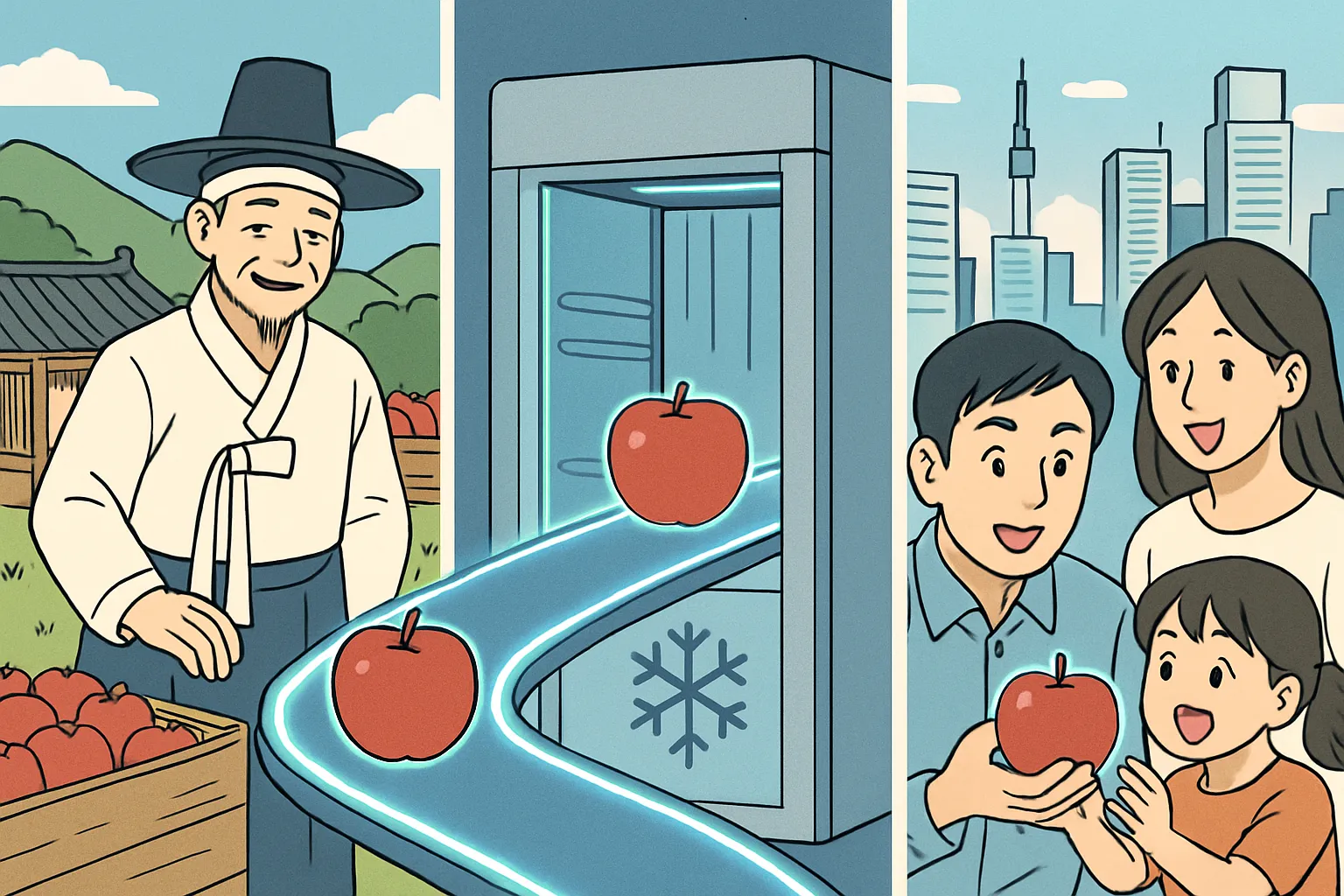My Tteokbokki is Cold! Korean for Delivery Disasters
Hello! It’s Maeil Hangeul here to upgrade your Korean skills!
Imagine this: you’ve had a long day, and you finally order your favorite Korean fried chicken. You wait excitedly, and when it arrives… it’s cold. Or even worse, the sauce has spilled all over the bag! Oh no! What do you do?
In Korea these days, with super-fast “rocket delivery” being the norm, everyone expects their food to arrive perfectly and quickly. So, knowing how to complain politely but effectively is a super important skill! Today, let’s learn the essential Korean phrases to save your delivery meal.
Core Expressions You MUST Know
Here are the key phrases you’ll need when you call the restaurant.
- 저기요, 방금 주문했는데요… (Jeogiyo, banggeum jumunhaenneundeyo…)
- Pronunciation [Romanized]: Jeo-gi-yo, bang-geum ju-mun-haen-neun-de-yo…
- English Meaning: Excuse me, I just placed an order…
- Detailed Explanation: This is the perfect, polite way to start the conversation on the phone. 저기요 (Jeogiyo) is “Excuse me,” and 방금 주문했는데요 (banggeum jumunhaenneundeyo) means “I just ordered…” The -는데요 (-neundeyo) ending is a very natural and soft way to introduce a situation or a problem. It’s much better than just stating the issue directly!
- 음식이 다 식었어요. (Eumsig-i da sig-eoss-eoyo.)
- Pronunciation [Romanized]: Eum-sig-i da sig-eoss-eo-yo.
- English Meaning: The food is all cold.
- Detailed Explanation: This is a simple and direct phrase for the most common delivery problem. 음식 (Eumsig) is “food,” and 식었어요 (sig-eoss-eoyo) means “it has cooled down.” By adding 다 (da), which means “all” or “completely,” you emphasize that it’s not just a little warm, but completely cold.
- 음식이 쏟아졌어요. (Eumsig-i ssod-a-jyeoss-eoyo.)
- Pronunciation [Romanized]: Eum-sig-i ssod-a-jyeoss-eo-yo.
- English Meaning: The food has spilled.
- Detailed Explanation: Use this phrase when your soup, drink, or sauce has made a mess. 쏟아졌어요 (Ssod-a-jyeoss-eoyo) means “it was spilled.” You can replace 음식 (Eumsig) with the specific item, like 국물 (gungmul – soup) or 커피 (keopi – coffee). For example: “국물이 쏟아졌어요.”
- 다시 보내주시거나 환불해 주세요. (Dasi bonaejusigeona hwanbulhae juseyo.)
- Pronunciation [Romanized]: Da-si bo-nae-ju-si-geo-na hwan-bul-hae ju-se-yo.
- English Meaning: Please either send it again or give me a refund.
- Detailed Explanation: This is how you ask for a solution! It’s two requests in one sentence.
- 다시 보내주세요 (Dasi bonaejuseyo) = Please send it again.
- 환불해 주세요 (Hwanbulhae juseyo) = Please give me a refund.
- The grammar point -거나 (-geona) connects them and means “or.” Using this phrase makes you sound very natural and shows you know what you want.
Example Dialogue
Let’s see how these phrases work in a real conversation! Imagine you ordered the super popular Cheese Tteokbokki, but it arrived cold and a bit messy.
- A (You): 여보세요? 저기요, 방금 치즈 떡볶이 주문했는데요…
(Yeoboseyo? Jeogiyo, banggeum chijeu tteokbokki jumunhaenneundeyo…)
(Hello? Excuse me, I just ordered cheese tteokbokki…) -
B (Restaurant): 네, 고객님. 무슨 문제 있으신가요?
(Ne, gogaengnim. Museun munje isseusin-gayo?)
(Yes, customer. Is there a problem?) -
A (You): 네, 음식이 다 식었고, 국물이 좀 쏟아졌어요.
(Ne, eumsig-i da sig-eotgo, gungmur-i jom ssod-a-jyeoss-eoyo.)
(Yes, the food is all cold, and the soup has spilled a bit.) -
B (Restaurant): 아, 정말 죄송합니다!
(A, jeongmal joesonghamnida!)
(Oh, I am so sorry!) -
A (You): 다시 보내주시거나 환불해 주세요.
(Dasi bonaejusigeona hwanbulhae juseyo.)
(Please either send it again or give me a refund.) -
B (Restaurant): 네, 바로 새로 만들어서 보내드리겠습니다. 죄송합니다!
(Ne, baro saero mandeureoseo bonaedeurigetseumnida. Joesonghamnida!)
(Okay, we will make a new one and send it right away. We are sorry!)
Culture Tip: The “Ppalli-Ppalli” Promise of Korean Delivery
You may have heard of Korea’s “빨리빨리 (ppalli-ppalli)” or “hurry, hurry” culture. This is especially true for food delivery! Because the service is famous for being incredibly fast, Korean customers have very high standards.
So, don’t feel shy or rude about calling! In Korea, if your food arrives in poor condition, it’s completely normal and expected that you will contact the restaurant for a solution. It’s not seen as complaining, but as ensuring you receive the quality service you paid for.
Pro-Tip: On modern delivery apps like Baemin (배달의민족) or Coupang Eats, leaving a review with a photo is also a very powerful and common way to resolve issues!
Let’s Review & Practice!
Great job today! You now know how to handle a delivery disaster like a local. You can politely start the call with “저기요, 방금 주문했는데요…”, explain that the food is cold (“식었어요”) or spilled (“쏟아졌어요”), and request a solution (“다시 보내주시거나 환불해 주세요”).
Now, let’s test your skills!
- Fill in the blank: Your pizza arrived completely cold. What do you say?
피자가 다 _______________.
- Your turn! Imagine your favorite food was delivered, but the drink spilled everywhere. How would you tell the restaurant? Try to write the full sentence!
Leave your answers and your own practice sentences in the comments below! We’d love to see you try using these expressions.






